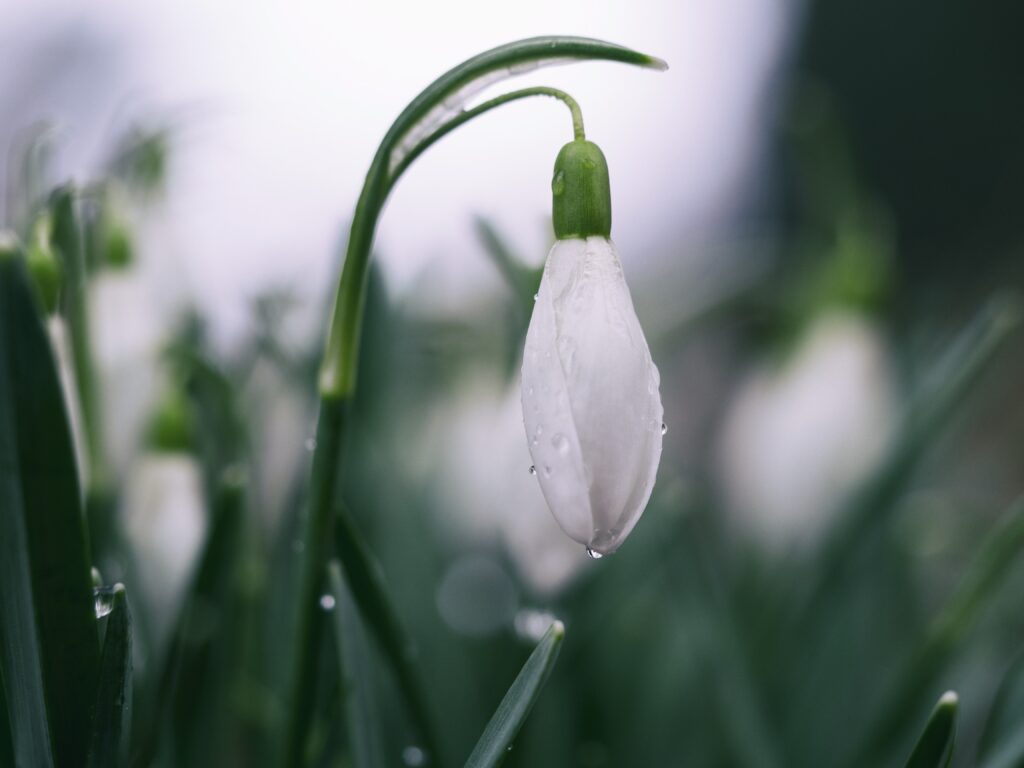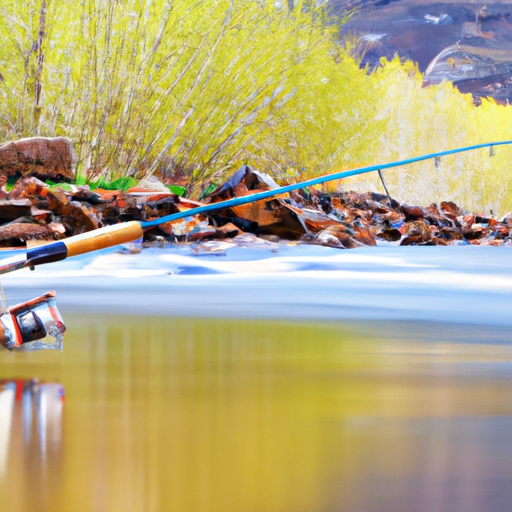Trout fishing in spring can be an exciting and rewarding experience for fishing enthusiasts. In this article, you will discover essential tips and techniques to make the most out of your spring trout fishing adventures. From choosing the right bait to understanding the behavior of trout during this season, you will gain valuable insights that will increase your chances of a successful fishing trip. So, grab your gear and get ready to dive into the world of spring trout fishing!

Understanding Trout Fishing in Spring
Trout fishing in spring is an exciting and rewarding experience for anglers of all skill levels. As the temperature warms up and the ice melts, trout become more active and begin to feed more aggressively. Spring is considered to be the best time to go trout fishing, as the fish are more active and abundant. However, understanding the factors that affect trout behavior in spring is crucial for a successful fishing trip.
The Best Time to Go Trout Fishing in Spring
Spring offers anglers great opportunities to catch trout, but timing is key. The best time to go trout fishing in spring is during the pre-spawn and spawn periods. This is when the fish are actively feeding and are more likely to take the bait. Typically, the pre-spawn period occurs between March and April, while the spawn period occurs between April and June. During these periods, trout are more aggressive, making them easier to catch.

Factors That Affect Trout Behavior in Spring
Several factors can influence trout behavior in spring, and understanding these factors can greatly increase your chances of success. Water temperature, weather conditions, and water levels play a significant role in trout activity. As the water temperature rises, trout become more active and move into shallower areas to feed. Additionally, weather conditions such as rain, wind, and cloud cover can also impact trout behavior. Lastly, water levels affect trout movement and feeding patterns, as they tend to seek out areas with suitable depth and current.
Choosing the Right Equipment and Gear
Selecting the appropriate equipment and gear is crucial to maximize your chances of catching trout in spring. Here are some key considerations when choosing your fishing gear.
Selecting the Appropriate Fishing Rod
When it comes to trout fishing, a lightweight and sensitive fishing rod is essential. A rod with a light to medium-light power rating is ideal for casting lightweight lures and bait accurately. Additionally, a rod with a fast or moderate-fast action allows for better casting distance and control.
Picking the Right Fishing Line
Choosing the right fishing line is crucial for trout fishing success. A monofilament or fluorocarbon fishing line with a 4-8-pound test is recommended, as it offers good sensitivity and invisibility in the water. These lines are also strong enough to handle most trout species.
Choosing the Right Hooks
Selecting the right hooks for trout fishing is essential to ensure you hook and land your catch successfully. For spring trout fishing, use size 8-12 hooks, depending on the size of the trout you are targeting. Make sure the hooks are sharp and check for any signs of rust or damage before each fishing trip.
Selecting the Proper Bait and Lures
Choosing the right bait or lures is crucial to attract trout in spring. Live bait such as worms, insects, or small minnows are effective options. If you prefer using lures, opt for small spinners, spoons, or artificial flies that mimic the natural prey of trout. Experiment with different colors and patterns to determine what works best in your fishing spot.

Techniques for Trout Fishing in Spring
Mastering the right techniques for trout fishing in spring can greatly enhance your fishing experience. Here are some techniques to consider.
Best Locations for Spring Trout Fishing
Finding the best locations for trout fishing in spring is essential. Look for areas with cool, clear water and good oxygenation such as streams, rivers, or lakes. Trout tend to congregate near structures such as fallen trees, rocks, or undercut banks where they can hide and ambush their prey. Additionally, focus on areas with current breaks or deeper pools where trout can rest and feed.
Understanding Trout Feeding Habits
Understanding trout feeding habits and preferences is crucial for successful spring trout fishing. Trout are opportunistic feeders and will consume a wide range of prey including insects, small fish, and crustaceans. Match your bait or lure to the prevalent food source in your fishing spot. Pay attention to the water surface for any signs of trout feeding activity, such as rising or jumping fish.
Using the Correct Casting Techniques
Mastering the correct casting techniques is essential for accurate and effective trout fishing. Practice your casting skills to achieve accurate and delicate presentations. Avoid making loud splashes or disturbances that can spook trout. Cast upstream and allow your bait or lure to drift naturally with the current, mimicking the behavior of real prey.
Effective Retrieval Methods
The way you retrieve your bait or lure can greatly influence trout behavior and entice them to strike. Experiment with different retrieval methods such as slow and steady retrieves, jerking or twitching motions, or a combination of both. Vary the speed and depth of your retrieve to find out what entices trout to strike.
Tips for Successful Trout Fishing in Spring
While understanding the behavior of trout and using the right techniques are crucial, there are additional tips that can help you make the most of your spring trout fishing adventures.
Understanding the Weather and Water Conditions
Pay close attention to weather and water conditions when planning your trout fishing trip. Trout are more active and likely to feed during overcast or cloudy days. Rain can also trigger feeding activity as it washes insects and other prey into the water. Additionally, be aware of water temperature and levels, as they greatly impact trout behavior.
Being Patient and Observant
Trout fishing requires patience and observation. Take the time to observe your surroundings and scan the water for any signs of trout activity. Be patient and persistent, as trout can sometimes be finicky and selective in what they feed on. Stay focused and alert, as trout can be easily spooked by sudden movements or disturbances.
Using Stealth and Camouflage
Trout have excellent eyesight and can easily detect any unnatural movements or presence. To increase your chances of success, practice stealth and camouflage techniques. Avoid wearing bright or flashy clothing that can easily be spotted by trout. Move slowly and quietly along the water’s edge to maintain a low profile.
Keeping Your Fishing Area Clean
Responsible angling involves keeping your fishing area clean and free of litter. Dispose of any trash properly and bring a bag to collect any waste generated during your fishing trip. Leaving the fishing area cleaner than you found it helps preserve the environment and ensure a positive fishing experience for future anglers.

Trout Fishing Regulations and Ethics
As an angler, it is crucial to familiarize yourself with local fishing regulations and practice ethical fishing techniques.
Familiarizing Yourself with Local Fishing Regulations
Different states and regions may have specific fishing regulations and restrictions for trout fishing. Make sure you are aware of the local rules concerning bag limits, size limits, fishing seasons, and any special restrictions in your fishing area. Adhering to these regulations helps conserve the trout population and ensures sustainable fishing for future generations.
Practicing Catch and Release
Catch and release is an important practice in trout fishing, especially during the spawning period. Release any undersized or unwanted fish back into the water gently and with care. This practice helps maintain healthy trout populations and supports the overall ecosystem.
Respecting the Environment and Wildlife
Trout fishing should be done with utmost respect for the environment and wildlife. Avoid disturbing or damaging aquatic vegetation and habitats. Be cautious when wading through streams to avoid disrupting trout spawning grounds. Additionally, handle fish gently and with care to minimize stress and injury.
Additional Tips for Spring Trout Fishing
To enhance your spring trout fishing experience, consider these additional tips and techniques.
Using Floats and Indicators
Using floats or indicators can improve your chances of detecting strikes and improve your presentation. Attach a float or indicator above your bait or lure to help detect subtle bites or nibbles.
Experimenting with Different Baits and Lures
Trout can be selective in their feeding patterns, so it’s important to experiment with different baits and lures to determine what they prefer. If one type of bait or lure is not attracting bites, try switching to another option. Keep a variety of bait and lures in your tackle box to match the prevailing conditions and trout preferences.
Keeping a Fishing Journal
Keeping a fishing journal is a valuable tool for tracking your fishing experiences. Record the date, location, weather conditions, and any successful techniques or baits used. This information can help you determine patterns and trends that lead to successful trout fishing trips.
Learning from Experienced Anglers
Engaging with experienced anglers can provide valuable insights and tips for successful trout fishing. Attend fishing seminars or join local fishing clubs and associations to connect with other anglers. Don’t be afraid to ask questions and learn from their expertise and experience.

Safety Precautions for Trout Fishing
While trout fishing is an enjoyable activity, it’s important to prioritize safety. Here are some safety precautions to consider.
Wearing Proper Fishing Apparel
Wear appropriate fishing apparel to protect yourself from the elements. Dress in layers to adapt to changing weather conditions, and wear a hat and sunglasses to protect yourself from the sun’s harmful UV rays. Additionally, wear sturdy footwear with good traction to prevent slips or falls.
Using Sunscreen and Protecting Against Insects
Protect your skin from sunburn by applying a broad-spectrum sunscreen with a high SPF rating. Reapply sunscreen regularly, especially if you are spending an extended period of time outdoors. Additionally, use insect repellent to protect yourself from mosquitoes and other biting insects.
Being Aware of Local Hazards and Wildlife
Before heading out for a trout fishing trip, familiarize yourself with local hazards and wildlife that may be present in the area. Be aware of any poisonous plants or dangerous animals that may pose a threat. Take precautions to avoid encounters with wildlife and follow any guidelines or regulations set by local authorities.
Trout Fishing Etiquette and Respect
Trout fishing etiquette and respect for other anglers, as well as the environment and wildlife, are integral parts of responsible angling.
Respecting Other Anglers
When fishing in popular areas, be considerate of other anglers. Give them enough space and avoid casting near their lines. Be courteous and friendly, and avoid disturbing the fishing experience of other anglers.
Practicing Good Fishing Etiquette
Responsible anglers practice good fishing etiquette to ensure the sustainability and enjoyment of the sport. Follow local regulations, respect property boundaries, and dispose of trash properly. Avoid excessive noise and disturbances that can disrupt the natural environment and the fishing experience of others.
Being Considerate of Nature and Wildlife
Trout fishing takes place in beautiful natural environments that are home to a diverse range of wildlife. Be considerate and respectful towards nature and wildlife. Avoid littering, disturbing nesting grounds, and damaging vegetation. Leave the fishing area as you found it, so that others can also enjoy its beauty.
Preparing Your Catch
If you plan to keep the trout you catch, it’s important to know how to properly handle, clean, and store them.
Knowing How to Properly Handle Trout
When handling trout, it’s important to minimize stress and potential harm to the fish. Wet your hands before touching the fish to avoid removing its protective slime layer. Support the trout gently, avoiding excessive squeezing or gripping. Minimizing handling time and keeping the fish in the water as much as possible will improve its chances of survival if released.
Cleaning and Filleting Trout
Cleaning and filleting trout can be a rewarding experience, but it requires some skill and practice. Start by removing the scales with a fish scaler or the back of a knife. Make a diagonal cut behind the gills and use a sharp fillet knife to follow the backbone, removing the two fillets. Rinse the fillets thoroughly in cold water to remove any residual blood or scales.
Storing Trout
If you plan to store trout for later consumption, it’s important to handle and store them properly to maintain their freshness. Keep the trout chilled on ice or in a cooler as soon as possible after catching them. If you plan to freeze the trout, wrap them tightly in plastic wrap or sealable bags to prevent freezer burn. Label each package with the date to ensure proper rotation and freshness.
Trout Fishing Resources and Communities
To enhance your knowledge and connect with fellow anglers, explore the various trout fishing resources and communities available.
Online Forums and Groups
Online fishing forums and groups provide an excellent platform to share experiences, ask questions, and learn from other anglers. Join online communities dedicated to trout fishing to access a wealth of knowledge and insights.
Books and Publications
There are numerous books and publications available that provide in-depth information and tips on trout fishing. Explore books written by experienced anglers, as well as fishing magazines and publications that cover trout fishing techniques and destinations.
Local Fishing Clubs and Associations
Joining local fishing clubs and associations is a great way to connect with fellow anglers and access local fishing knowledge. Participate in organized events, workshops, or fishing trips organized by these clubs to further enhance your trout fishing skills.
In conclusion, trout fishing in spring offers anglers a thrilling and rewarding experience. By understanding trout behavior, choosing the right equipment and gear, and mastering the techniques, you can increase your chances of success. Remember to follow fishing regulations, practice ethical fishing techniques, and respect the environment and wildlife. With the right knowledge, skills, and attitude, you can enjoy a successful and enjoyable trout fishing adventure in spring.





